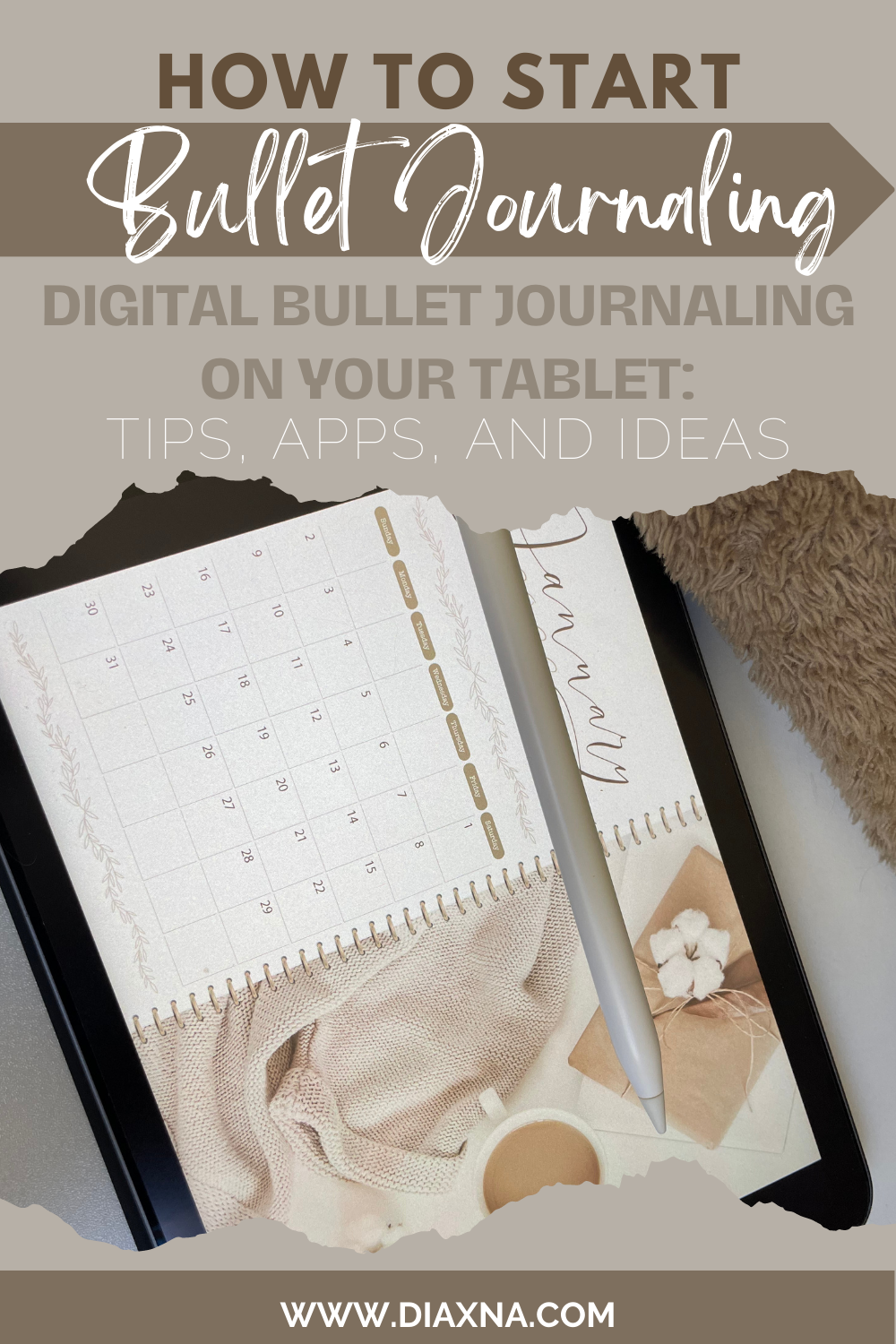The History of Journaling and Its Evolution
Hi, I am Dia 👋 Welcome to Diaxna, a space I created to celebrate the marriage of aesthetics and practicality in the digital realm. This blog is a haven for those seeking beautiful yet functional digital templates. I believe in empowering creators by showcasing their incredible work and helping people discover outstanding digital products. If you're eager to elevate your planning and productivity to the next level, I am here to guide you through the realm of digital templates and beyond. Join me on this creative journey sharing helpful digital products where beauty meets efficiency, and inspire ourself to design a more organized and inspired life! I hope this site and blog post helps you to discover helpful and stunning templates and thank you for stopping by ✨
Journaling has been a part of human culture for thousands of years, documenting daily life, reflecting on personal experiences, and expressing one's thoughts and emotions. Over time, Journaling has evolved from simple record-keeping to a complex practice incorporating mindfulness, self-reflection, and goal-setting.
Origins of Journaling
In the 10th century, Japanese courtiers kept "pillow books" to record their thoughts and observations, marking the first known instance of Journaling. Chinese scholars also adopted similar practices, who kept "jottings" to record their daily activities and reflect on their personal lives.
During the Renaissance, Journaling became popular among European scholars and intellectuals, who used it to document their observations and discoveries. These early journals were often filled with scientific observations, philosophical musings, and personal anecdotes.
Evolution of Journaling
In the 20th century, Journaling began to take on a more personal and reflective focus. Psychologists and therapists recommended journaling to improve mental health and process emotional trauma. This led to the development of different types of Journaling, such as dream journals, gratitude journals, and bullet journals.
Bullet Journaling
Bullet journaling is a unique method of Journaling that combines mindfulness and productivity in a customizable system. Since its development by Ryder Carroll in 2013, the technique has become increasingly popular, with millions of individuals worldwide utilizing it to manage their schedules, establish objectives, and monitor their advancements.
At its core, bullet journaling is a method of rapid logging. Users create bulleted lists, from daily to-do lists to long-term goals. These lists can be customized to fit the individual's needs, allowing them to create the best system for them.
In addition to lists, bullet journaling also involves calendars and trackers. Users can create monthly or weekly calendars to track important events and deadlines and develop trackers to monitor their progress on specific goals or habits. For example, someone might make a tracker to monitor their daily water intake or their progress on a fitness goal.
One of the critical features of bullet journaling is its flexibility. Because the system is entirely customizable, users can adapt it to fit their unique needs and preferences. For example, they can incorporate elements of mindfulness, such as gratitude lists or daily reflections, or they can focus solely on productivity and organization.
Bullet journaling has become popular because it offers a way to declutter the mind and stay organized, all while promoting mindfulness and self-awareness. By keeping everything in one place, users can eliminate the need for multiple notebooks or apps and streamline their lives in a way that promotes efficiency and focus.
Overall, bullet journaling is a powerful tool for improving productivity, staying organized, and promoting mindfulness. This method can assist anyone in achieving their goals and leading their best life, whether they are a student, a professional, or simply someone seeking to improve their life management skills.
Gratitude Journaling
In recent years, gratitude journaling has gained significant attention and has become another popular form. This type of Journaling involves writing down things one is grateful for daily. The purpose of this practice is to promote positive thinking and mental well-being.
Research has shown that regular gratitude journaling can profoundly impact mental health. For example, one study found that individuals who practiced gratitude Journaling for just three weeks reported significantly higher levels of optimism and positive thinking than those who did not engage in the practice. Another study found that individuals who kept a gratitude journal had increased feelings of social support and reduced symptoms of depression compared to those who did not keep a gratitude journal.
Reflecting on what one is grateful for can help shift the focus away from negative thoughts and emotions and onto the positive aspects of life. It can also help individuals develop a greater appreciation for the people and things around them, leading to increased feelings of happiness and well-being.
Gratitude journaling is a simple practice that can be easily incorporated into one's daily routine. It can be done in a traditional journal format or through a digital platform, such as an app or online journal. For example, some people prefer to write down three things they are grateful for daily, while others may write longer entries reflecting on their gratitude.
Gratitude journaling is a powerful tool that can help promote positive thinking and mental well-being. Allocating a few minutes daily to express gratitude can enhance our life satisfaction, lessen anxiety and depression symptoms, and help us develop a profound appreciation for our lives.
Dream Journaling
Dream journaling is a type of Journaling that involves recording one's dreams regularly. The practice is based on the idea that dreams can offer insights into the unconscious mind and help individuals better understand their emotions, motivations, and desires.
To start dream journaling, individuals should keep a notebook or journal by their bed and try to write down their dreams as soon as they wake up. This can be done either in a narrative form or as a series of bullet points.
In addition to recording the details of the dream, individuals may also want to include any emotions, sensations, or symbols that stood out to them. They can also make a note of any recurring themes or patterns that they notice over time.
One of the key benefits of dream journaling is its ability to promote self-awareness and personal growth. By analyzing their dreams over time, individuals can gain greater insight into their unconscious thoughts and feelings and identify patterns or issues they must work through.
Dream journaling can also be a helpful tool for creativity and problem-solving. Some people find their dreams offer new and unexpected insights into creative projects or work-related challenges. Others may use their dreams as inspiration for art or writing projects.
Overall, dream journaling is a powerful tool for individuals looking to deepen their understanding of their psyche and promote personal growth and creativity. Whether used as a standalone practice or combined with other types of Journaling, it can be a valuable tool for anyone looking to explore their inner world and better understand themselves.
Benefits of Journaling
Journaling has numerous benefits, from improved mental health to increased creativity and productivity. In addition, regular Journaling can help individuals gain clarity and perspective on their lives, work through emotional challenges, and develop a deeper understanding of their thoughts and feelings.
In addition, Journaling can be a creative outlet for self-expression, helping individuals to develop their writing skills and explore their creativity. Finally, Journaling can be used as a tool for personal growth, enabling individuals to set goals and track their progress over time.
Affiliate Disclosure: This post includes affiliate links, which means I may earn a small commission on purchases made through these links at no extra cost to you. Thank you for supporting this site.
Check out more posts of Journaling and get inspired by new ideas:
Whether you prefer bullet journaling, gratitude journaling, or simply writing down your thoughts and feelings daily, Journaling can profoundly impact your mental health and well-being. I hope you consider incorporating Journaling in to your daily routine!
More posts to explore:
FEATURED POSTS















































